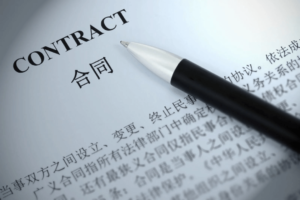When it comes to protecting your intellectual property (IP) rights in China, proactive measures are paramount. One of the first legal steps many companies or individuals take when they discover a violation of their IP rights in China is to issue a cease-and-desist (C&D) letter. This letter is essentially a formal notification that demands the infringer to stop the unauthorized use of the IP and, often, to take corrective measures.
Table of Contents
ToggleWhy a Tailored Letter in Chinese is Crucial:
- Cultural and Legal Nuance: A generic C&D letter, especially one drafted based on Western standards, may not have the desired impact in China. To be effective, the letter should consider the local legal nuances, business customs, and language. The recipient will take a locally adapted letter more seriously.
- Clarity and Misunderstanding: To ensure that the infringer fully understands the gravity of the situation, the letter should be written in their native language, Chinese. This will avoid any claims of misunderstanding or misinterpretation.
- Legal Efficacy: A C&D letter tailored for the Chinese jurisdiction, citing relevant Chinese laws and regulations, can have greater legal weight. It showcases that the IP holder is well-versed in the local legal landscape and is prepared to escalate the matter if required.
Key Components of a Cease-and-Desist Letter in China:
- Detailed Identification of the IP Holder: Clearly mention the name of the IP holder, their contact information, and, if relevant, any local representation they might have in China.
- Description of the IP: This should include a comprehensive description of the IP being infringed upon, be it a patent, trademark, copyright, or trade secret. If applicable, include any registration numbers or pertinent details.
- Evidence of Infringement: Provide clear evidence that showcases the infringement. This could be photographs, screenshots, product samples, or other demonstrative evidence.
- Reference to Relevant Chinese Laws: Mention the specific Chinese laws and regulations that the infringer is violating. This could include references to China’s Trademark Law, Patent Law, Copyright Law, Anti-Unfair Competition Law, etc.
- Specific Demands: Clearly outline what actions you expect the infringer to take. This could range from immediately stopping the production and sale of the infringing goods, recalling products, offering public apologies, or even paying damages.
- Timeframe for Compliance: Specifying a clear deadline by which the infringer should respond or comply with the demands is essential. This creates a sense of urgency.
- Consequences of Non-compliance: Highlight the legal actions to be taken if the demands are unmet within the specified timeframe. This could include filing a lawsuit, seeking damages, or taking other legal measures.
- A Channel for Communication: Offer a method or channel through which the infringer can communicate, ideally through your legal representative in China. This facilitates a potential negotiation or resolution.
Conclusion:
While a cease-and-desist letter is a crucial first step in IP protection in China, its effectiveness largely depends on its adaptation to the local context. A tailored letter in Chinese, taking into account the unique cultural and legal landscape, will be more impactful and lay the groundwork for any subsequent legal actions if necessary.
FAQ: How to Use Cease-and-Desist Letters for China IP Protection
- What is a cease-and-desist (C&D) letter?
- A C&D letter is a formal notification that demands an infringer to stop the unauthorized use of intellectual property (IP) and often to take corrective measures.
- Why is a tailored letter in Chinese important for IP protection in China?
- A tailored letter in Chinese addresses cultural and legal nuances, avoids misunderstandings due to language barriers, and has greater legal efficacy within the Chinese jurisdiction.
- What should the C&D letter include as evidence of infringement?
- The letter should contain clear evidence like photographs, screenshots, product samples, or any other demonstrative evidence showcasing the infringement.
- Should the C&D letter cite Chinese laws?
- Yes, referencing specific Chinese laws and regulations, such as China’s Trademark Law or Patent Law, makes the letter more legally robust and showcases familiarity with the local legal landscape.
- How specific should the demands in the C&D letter be?
- Demands should be clear and precise, ranging from stopping the production of infringing goods to recalling products, offering apologies, or even paying damages.
- Is it necessary to set a compliance deadline in the C&D letter?
- Yes, specifying a clear deadline creates a sense of urgency and provides a timeframe within which the infringer should respond or comply.
- What happens if the infringer does not comply with the C&D letter’s demands?
- The letter should outline potential legal actions that may be taken, including filing a lawsuit, seeking damages, or other legal measures.








